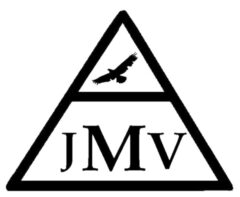Mia Shokry, Ehab G Daoud
Cite
Shokry M, Daoud EG. Ventilator circuits mechanics and ventilator compensation. J Mech Vent 2024; 5(4):134-137.
Abstract
Introduction
Invasive mechanical ventilation usually uses a double limb circuit. However, those circuits are not standardized and usually come from different manufacturers with different lengths, diameters, compliances and resistances. Those differences can affect the delivered tidal volumes and pressures delivered to the patient.
We aimed to test three different circuits to measure their compliance and resistance and measure their effects on delivered tidal volume and airway pressures after being calibrated by the ventilator.
Methods
Descriptive study, three different double limb circuits: separate inspiratory and expiratory limb (Vyaire 72 inch length, 22 mm diameter), separate inspiratory with heated wire and expiratory limb (Fisher and Paykel 71 inch, 22 mm diameter), and separate inspiratory and expiratory limb in one tube (Vyaire length 75 inch and 22 mm diameter). Bellavista 1000e ventilator (Zoll, MA, USA) was used to conduct the experiment with the volume controlled mode, tidal volume 500 ml, inspiratory flow of 30 L/min, PEEP of 5 cmH2O, respiratory rate of 20 bpm. Leak, resistance and compliance obtained from the ventilator display during circuit calibration.
A passive single lung model with compliance of 80 ml/cmH2O and resistance of 10 cmH2O/L/s constructed using lung simulator (ASL 5000) used to measure the delivered the tidal volume, flow, airway pressures (Peak, plateau, PEEP) delivered to calculate the total compliance and resistance and the effect of the circuits.
Results
The three circuits had different compliances and resistances. Separate limbs: compliance of 0.84 ml/cmH2O, Inspiratory resistance 3.37 cmH2O/L/s, expiratory resistance 5.54 cmH2O/L/s resulting in total compliance 84.06 ml/cmH2O, inspiratory resistance 4.8 cmH2O/L/s. Separate limbs with heated wire in inspiratory limb: compliance 1.88 ml/cmH2O, Inspiratory resistance 3.22 and expiratory resistance 4.67 cmH2O/L/s, resulting in total compliance 82.74 ml/cmH2O, inspiratory resistance 4.81 cmH2O/L/s. Double limb in one circuit: compliance 2.25 ml/cmH2O, Inspiratory resistance 4.07 cmH2O/L/s, expiratory resistance 4.38 cmH2O/L/s, resulting in total compliance 82.91 ml/cmH2O, inspiratory resistance 4.81 cmH2O/L/s.
Conclusion
The measured compliances and resistances of the circuits differed slightly, however the ventilator compensated well for the differences with minimal difference in the combined total compliances and resistances. Further investigation across a broader range of circuit designs and ventilator models could help establish more standardized guidelines and recommendations for circuit selection in clinical practice.
Keywords: Ventilator circuits, circuit compliance and resistance, ventilator compensation
References
| 1. Breathing circuits for manual and mechanical ventilation, in Deranged physiology. https://derangedphysiology.com/main/cicm-primary-exam/required-reading/respiratory-system/Chapter%20505/breathing-circuits-manual-and-mechanical-ventilation. Accessed September 2024 | |||
| 2. Yamasaki Kimiyo. Mechanical Ventilators circuit types. J Mech Vent 2023; 4(4):165-167. https://doi.org/10.53097/JMV.10092 | |||
| 3. International Organization for Standardization. https://www.iso.org/standard/55387.html | |||
| 4. Fundamentals of Mechanical Ventilation: A Short Course on the Theory and Application of Mechanical Ventilators. Robert L Chatburn RRT-NPS FAARC. Cleveland Heights, Ohio: Mandu Press 2003, 138-142. | |||
| 5. Masselli GM, Silvestri S, Sciuto SA, et al. Circuit compliance compensation in lung protective ventilation. Conf Proc IEEE Eng Med Biol Soc. 2006;2006:5603-6. https://doi.org/10.1109/IEMBS.2006.260066 PMid:17946711 | |||
| 6. Lucangelo U, Bernabé F, Blanch L. Respiratory mechanics derived from signals in the ventilator circuit. Respir Care 2005; 50(1):55-65. PMID: 15636645 | |||
| 7. Humidification and the Ventilator Circuit. In: Hess DR, Kacmarek RM. eds. Essentials of Mechanical Ventilation, 4e. McGraw-Hill Education; 2019. | |||
| 8. Gregoretti C, Navalesi P, Ghannadian S, et al. Choosing a ventilator for home mechanical ventilation. Breathe 2013; 9(5):394-409. https://doi.org/10.1183/20734735.042312 | |||
| 9. Hess DR. Respiratory mechanics in mechanically ventilated patients. Respir Care 2014; 59(11):1773-94. https://doi.org/10.4187/respcare.03410 PMid:25336536 | |||
| 10. Liu PH, Chatburn RL. The Effect of Inspiratory Effort on Circuit Compensation for Volume-Targeted Modes. Respir Care 2022; 67(7):857-862. https://doi.org/10.4187/respcare.09729 PMid:35610027 | |||
| 11. Toma S, Shokry M, Daoud EG. Flow and pressure sensors location in the ventilator, does it matter? J Mech Vent; 4(1):19-29. https://doi.org/10.53097/JMV.10071 |
